Interventions outside the workplace for reducing sedentary behaviour in adults under 60 years of age
- PMID: 32678471
- PMCID: PMC7389819
- DOI: 10.1002/14651858.CD012554.pub2
Interventions outside the workplace for reducing sedentary behaviour in adults under 60 years of age
Abstract
Background: Adults spend a majority of their time outside the workplace being sedentary. Large amounts of sedentary behaviour increase the risk of type 2 diabetes, cardiovascular disease, and both all-cause and cardiovascular disease mortality.
Objectives: Primary • To assess effects on sedentary time of non-occupational interventions for reducing sedentary behaviour in adults under 60 years of age Secondary • To describe other health effects and adverse events or unintended consequences of these interventions • To determine whether specific components of interventions are associated with changes in sedentary behaviour • To identify if there are any differential effects of interventions based on health inequalities (e.g. age, sex, income, employment) SEARCH METHODS: We searched CENTRAL, MEDLINE, Embase, Cochrane Database of Systematic Reviews, CINAHL, PsycINFO, SportDiscus, and ClinicalTrials.gov on 14 April 2020. We checked references of included studies, conducted forward citation searching, and contacted authors in the field to identify additional studies.
Selection criteria: We included randomised controlled trials (RCTs) and cluster RCTs of interventions outside the workplace for community-dwelling adults aged 18 to 59 years. We included studies only when the intervention had a specific aim or component to change sedentary behaviour.
Data collection and analysis: Two review authors independently screened titles/abstracts and full-text articles for study eligibility. Two review authors independently extracted data and assessed risk of bias. We contacted trial authors for additional information or data when required. We examined the following primary outcomes: device-measured sedentary time, self-report sitting time, self-report TV viewing time, and breaks in sedentary time.
Main results: We included 13 trials involving 1770 participants, all undertaken in high-income countries. Ten were RCTs and three were cluster RCTs. The mean age of study participants ranged from 20 to 41 years. A majority of participants were female. All interventions were delivered at the individual level. Intervention components included personal monitoring devices, information or education, counselling, and prompts to reduce sedentary behaviour. We judged no study to be at low risk of bias across all domains. Seven studies were at high risk of bias for blinding of outcome assessment due to use of self-report outcomes measures. Primary outcomes Interventions outside the workplace probably show little or no difference in device-measured sedentary time in the short term (mean difference (MD) -8.36 min/d, 95% confidence interval (CI) -27.12 to 10.40; 4 studies; I² = 0%; moderate-certainty evidence). We are uncertain whether interventions reduce device-measured sedentary time in the medium term (MD -51.37 min/d, 95% CI -126.34 to 23.59; 3 studies; I² = 84%; very low-certainty evidence) We are uncertain whether interventions outside the workplace reduce self-report sitting time in the short term (MD -64.12 min/d, 95% CI -260.91 to 132.67; I² = 86%; very low-certainty evidence). Interventions outside the workplace may show little or no difference in self-report TV viewing time in the medium term (MD -12.45 min/d, 95% CI -50.40 to 25.49; 2 studies; I² = 86%; low-certainty evidence) or in the long term (MD 0.30 min/d, 95% CI -0.63 to 1.23; 2 studies; I² = 0%; low-certainty evidence). It was not possible to pool the five studies that reported breaks in sedentary time given the variation in definitions used. Secondary outcomes Interventions outside the workplace probably have little or no difference on body mass index in the medium term (MD -0.25 kg/m², 95% CI -0.48 to -0.01; 3 studies; I² = 0%; moderate-certainty evidence). Interventions may have little or no difference in waist circumference in the medium term (MD -2.04 cm, 95% CI -9.06 to 4.98; 2 studies; I² = 65%; low-certainty evidence). Interventions probably have little or no difference on glucose in the short term (MD -0.18 mmol/L, 95% CI -0.30 to -0.06; 2 studies; I² = 0%; moderate-certainty evidence) and medium term (MD -0.08 mmol/L, 95% CI -0.21 to 0.05; 2 studies, I² = 0%; moderate-certainty evidence) Interventions outside the workplace may have little or no difference in device-measured MVPA in the short term (MD 1.99 min/d, 95% CI -4.27 to 8.25; 4 studies; I² = 23%; low-certainty evidence). We are uncertain whether interventions improve device-measured MVPA in the medium term (MD 6.59 min/d, 95% CI -7.35 to 20.53; 3 studies; I² = 70%; very low-certainty evidence). We are uncertain whether interventions outside the workplace improve self-reported light-intensity PA in the short-term (MD 156.32 min/d, 95% CI 34.34 to 278.31; 2 studies; I² = 79%; very low-certainty evidence). Interventions may have little or no difference on step count in the short-term (MD 226.90 steps/day, 95% CI -519.78 to 973.59; 3 studies; I² = 0%; low-certainty evidence) No data on adverse events or symptoms were reported in the included studies.
Authors' conclusions: Interventions outside the workplace to reduce sedentary behaviour probably lead to little or no difference in device-measured sedentary time in the short term, and we are uncertain if they reduce device-measured sedentary time in the medium term. We are uncertain whether interventions outside the workplace reduce self-reported sitting time in the short term. Interventions outside the workplace may result in little or no difference in self-report TV viewing time in the medium or long term. The certainty of evidence is moderate to very low, mainly due to concerns about risk of bias, inconsistent findings, and imprecise results. Future studies should be of longer duration; should recruit participants from varying age, socioeconomic, or ethnic groups; and should gather quality of life, cost-effectiveness, and adverse event data. We strongly recommend that standard methods of data preparation and analysis are adopted to allow comparison of the effects of interventions to reduce sedentary behaviour.
Copyright © 2020 The Cochrane Collaboration. Published by John Wiley & Sons, Ltd.
Conflict of interest statement
Elaine M Murtagh: none known.
Marie H Murphy: together with another Ulster University colleague, the Sport & Exercise Sciences Research Institute at UU has received 20 standing desks from Ergotron to allow us to undertake a small research project on the use of sit‐to‐stand desks in office workers. This work is at feasibility stage and will not feature in the review.
Charles Foster: none known.
Karen Milton: none known.
Nia W Roberts: none known.
Clodagh SM O'Gorman: none known.
Figures
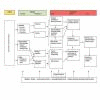
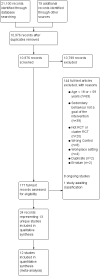
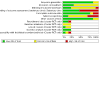
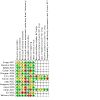
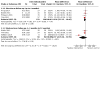
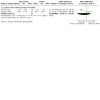
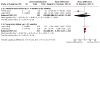
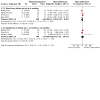
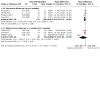

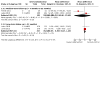


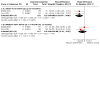


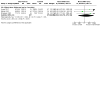
Update of
- doi: 10.1002/14651858.CD012554
Similar articles
-
Interventions for reducing sedentary behaviour in community-dwelling older adults.Cochrane Database Syst Rev. 2021 Jun 25;6(6):CD012784. doi: 10.1002/14651858.CD012784.pub2. Cochrane Database Syst Rev. 2021. PMID: 34169503 Free PMC article.
-
Workplace interventions for reducing sitting at work.Cochrane Database Syst Rev. 2018 Dec 17;12(12):CD010912. doi: 10.1002/14651858.CD010912.pub5. Cochrane Database Syst Rev. 2018. PMID: 30556590 Free PMC article.
-
Workplace interventions for increasing standing or walking for decreasing musculoskeletal symptoms in sedentary workers.Cochrane Database Syst Rev. 2019 Nov 17;2019(11):CD012487. doi: 10.1002/14651858.CD012487.pub2. Cochrane Database Syst Rev. 2019. PMID: 31742666 Free PMC article.
-
Workplace pedometer interventions for increasing physical activity.Cochrane Database Syst Rev. 2020 Jul 21;7(7):CD009209. doi: 10.1002/14651858.CD009209.pub3. Cochrane Database Syst Rev. 2020. PMID: 32700325 Free PMC article.
-
Psychosocial interventions for preventing and treating depression in dialysis patients.Cochrane Database Syst Rev. 2019 Dec 2;12(12):CD004542. doi: 10.1002/14651858.CD004542.pub3. Cochrane Database Syst Rev. 2019. PMID: 31789430 Free PMC article.
Cited by
-
Behavioral Medicine for Sedentary Behavior, Daily Physical Activity, and Exercise to Prevent Cardiovascular Disease: A Review.Curr Atheroscler Rep. 2021 Jul 6;23(9):48. doi: 10.1007/s11883-021-00948-x. Curr Atheroscler Rep. 2021. PMID: 34226989 Free PMC article. Review.
-
Interventions Designed to Support Physical Activity and Disease Prevention for Working from Home: A Scoping Review.Int J Environ Res Public Health. 2022 Dec 21;20(1):73. doi: 10.3390/ijerph20010073. Int J Environ Res Public Health. 2022. PMID: 36612407 Free PMC article.
-
The Effectiveness of Interventions to Reduce Sedentary Time in Different Target Groups and Settings in Germany: Systematic Review, Meta-Analysis and Recommendations on Interventions.Int J Environ Res Public Health. 2022 Aug 17;19(16):10178. doi: 10.3390/ijerph191610178. Int J Environ Res Public Health. 2022. PMID: 36011821 Free PMC article.
-
Domain-specific physical activity and sedentary behavior in relation to chronic kidney disease: a cross-sectional analysis of 24,950 U.S. adults in NHANES 1999-2012.Ren Fail. 2025 Dec;47(1):2525460. doi: 10.1080/0886022X.2025.2525460. Epub 2025 Jul 9. Ren Fail. 2025. PMID: 40635243 Free PMC article.
-
Effect of non-pharmacological interventions on adults with cardiovascular risk in a rural community.J Family Med Prim Care. 2022 Sep;11(9):5521-5526. doi: 10.4103/jfmpc.jfmpc_2472_21. Epub 2022 Oct 14. J Family Med Prim Care. 2022. PMID: 36505636 Free PMC article.
References
References to studies included in this review
Arrogi 2017 {published data only}
-
- Arrogi A, Bogaerts A, Seghers J, Devloo K, Vanden AV, Geurts L, et al. Evaluation of stAPP: a smartphone-based intervention to reduce prolonged sitting among Belgian adults. Health Promotion International 2017;6:1-6. - PubMed
-
- NCT01975870. A stAPP to a healthier lifestyle [A stAPP to a healthier lifestyle: a randomized controlled trial]. clinicaltrials.gov/ct2/show/record/NCT01975870 (first received 5 November 2013).
Barwais 2013 {published data only}
-
- Barwais FA. Using technology to change adult sedentary behaviour, physical activity levels and total wellness. School of Exercise and Nutrition Sciences: Doctor of Philosophy, 2013.
Biddle 2015 {published data only}
-
- Biddle S, Davies M, Khunti K, Gorely T, Edwardson C, Wilmot E, et al. Reducing sedentary time in young adults at risk of diabetes: Project STAND. Journal of Science and Medicine in Sport 2012;15:S4.
Cotten 2016 {published data only}
-
- Cotten E. Reducing sedentary behaviour in university students using a text message-based intervention. The School of Graduate and Postdoctoral Studies, Master of Arts, 2015 2015.
Ellingson 2016 {published data only}
-
- Ellingson LD, Meyer JD, Cook DB. Wearable technology reduces prolonged bouts of sedentary behavior. Translational Journal of the American College of Sports Medicine 2016;1(2):10-7.
Finni 2011 {published data only}
-
- Finni T, Saakslahti A, Laukkanen A, Pesola A, Sipila S. A family based tailored counselling to increase non-exercise physical activity in adults with a sedentary job and physical activity in their young children: design and methods of a year-long randomized controlled trial. BMC Public Health 2011;11:944. - PMC - PubMed
-
- Pesola A, Laukkanen A, Haakana P, Havu M, Sääkslahti A, Sipilä S, et al. Muscle inactivity and activity patterns after sedentary-time targeted randomized controlled trial. Medicine & Science in Sports & Exercise 2014;46(11):2122-31. - PubMed
-
- Pesola A. Reduced muscle inactivity, sedentary time and cardio-metabolic benefits: effectiveness of a one-year family-based cluster randomized controlled trial. Faculty of Sport and Health Sciences, PhD, 2016.
-
- Pesola AJ, Laukkanen A, Heikkinen R, Sipilä S, Sääkslahti A, Finni T. Accelerometer-assessed sedentary work, leisure time and cardio-metabolic biomarkers during one year: effectiveness of a cluster randomized controlled trial in parents with a sedentary occupation and young children. PLOS ONE 2017;12(8):e0183299. [DOI: 10.1371/journal.pone.0183299] - DOI - PMC - PubMed
French 2011 {published data only}
Jago 2013 {published data only}
Kitagawa 2020 {published data only}
Laska 2016 {published data only}
Lioret 2012 {published data only}
Sui 2018 {published data only}
-
- Sui W, Prapavessis H. Standing up for student health: an application of the health action process approach for reducing student sedentary behavior-randomised control pilot trial. Applied Psychology: Health and Well-Being 2018;10(1):87-107. - PubMed
Williams 2019 {published data only}
-
- Williams J, Stubbs B, Gaughra F, Craig T. ‘Walk This Way’ – a pilot of a health coachingintervention to reduce sedentary behaviourand increase low intensity exercise in peoplewith serious mental illness: study protocol fora randomised controlled trial. Trials 2016;17(594). [DOI: 10.1186/s13063-016-1660-2] - DOI - PMC - PubMed
-
- Williams, JStubbs, BRichardson, SFlower, CBarr-Hamilton, LGrey, BHubbard, KSpaducci, GGaughran, FCraig, T. 'Walk this way': Results from a pilot randomised controlled trial of a health coaching intervention to reduce sedentary behaviour and increase physical activity in people with serious mental illness. BMC Psychiatry 2019;19(1). [DOI: 10.1186/s12888-019-2274-5] - DOI - PMC - PubMed
References to studies excluded from this review
Aadahl 2012 {published data only}
-
- Aadahl M, Linneberg A, Witte D, Jorgensen T. Reduction of sitting time in sedentary men and women. A randomized controlled trial (Sedentary Intervention Trial). Aadahl 2012;15:S302.
Aadahl 2014 {published data only}
-
- Aadahl M, Linneberg A, Moller T C, Rosenorn S, Dunstan D W, Witte D R, et al. Motivational counseling to reduce sitting time: a community-based randomized controlled trial in adults. American Journal of Preventive Medicine 2014;47(5):576-86. - PubMed
Adams 2013a {published data only}
Adams 2015 {published data only}
-
- Adams Melanie M, Gill Diane L. Reducing Sedentary Behavior: Active Steps for Overweight Women. Women in Sport & PhysicalActivity Journal 2015;23(1):9-18.
Balducci 2019 {published data only}
-
- Balducci S, D'Errico V, Haxhi J, Sacchetti M, Orlando G, Cardelli P, et al. Effect of a Behavioral Intervention Strategy on Sustained Change in Physical Activity and Sedentary Behavior in Patients With Type 2 Diabetes: The IDES_2 Randomized Clinical Trial. Journal of the American Medical Association 2019;321(9):880-90. - PubMed
Barone Gibbs 2018 {published data only}
Barwais 2014 {published data only}
-
- Barwais F, Cuddihy T. Empowering sedentary adults to reduce sedentary behaviour: Success with a technology-based physical activity monitor. Journal of Science and Medicine in Sport 2014;18:e67.
Barwais 2015 {published data only}
Bohn 2017 {published data only}
-
- Bohn L, Sa-Couto P, Castro A, Ribeiro F, Oliveira J. Effects of a health education intervention on sedentary time, moderate-to-vigorous physical activity, and body mass index in individuals with moderate-to-high cardiovascular risk. Obesity Facts 2017;10 (Supplement 1):119-20.
Bond 2014 {published data only}
Carr 2013 {published data only}
Casey 2018 {published data only}
Chiang 2019 {published data only}
-
- Chiang L C, Heitkemper M M, Chiang S L, Tzeng W C, Lee M S, Hung Y J, et al. Motivational Counseling to Reduce Sedentary Behaviors and Depressive Symptoms and Improve Health-Related Quality of Life Among Women With Metabolic Syndrome. The Journal of Cardiovascular Nursing 2019;34(4):327-35. - PMC - PubMed
Conroy 2016 {published data only}
De Cocker 2008 {published data only}
-
- De Cocker K A, De Bourdeaudhuij I M, Brown W J, Cardon G M. The effect of a pedometer-based physical activity intervention on sitting time. Preventive Medicine 2008;47(2):179-81. - PubMed
Dewa 2009 {published data only}
-
- Dewa Carolyn S, deRuiter Wayne, Chau Nancy, Karioja Kim. Walking for wellness: using pedometers to decrease sedentary behaviour and promote mental health. International Journal ofMental Health Promotion 2009;11(2):24-8.
Duncan 2016 {published data only}
-
- Duncan M J, Vandelanotte C, Trost S G, Rebar A L, Rogers N, Burton N W, et al. Balanced: a randomised trial examining the efficacy of two self-monitoring methods for an app-based multi-behaviour intervention to improve physical activity, sitting and sleep in adults. BMC Public Health 2016;16:670. - PMC - PubMed
Edwards 2016 {published data only}
-
- Edwards M K. The Effects of a Randomized Control Trial Sedentary Behavior Intervention on Depression in Active, Young Adults: 3211 Board #276 June 3, 2: 00. Medicine & Science inSports & Exercise 2016;48(5 Suppl 1):917.
Garcia‐Ortiz 2017 {published data only}
-
- Garcia-Ortiz L, Recio-Rodriguez J I, Agudo-Conde C, Repiso-Gento I, Schmolling-Guinovart Y, Gonzalez-Viejo N, et al. Effectiveness of a smartphone application in increasing physical activity and decrease sedentary lifestyle. the evident II study. Journal ofHypertension 2017;35 (Supplement 2):e298-9.
Gardner 2014 {published data only}
George 2018 {published data only}
-
- George, ES. Increasing physical activity and reducing sedentary time in middle-aged males. DissertationAbstracts International Section C: Worldwide 2018;75(1-C):No Pagination Specified-.
Gine‐Garriga 2017 {published data only}
-
- Gine-Garriga Maria, Coll-Planas Laura, Guerra Miriam, Domingo Alex, Roque Marta, Caserotti Paolo, et al. The SITLESS project: exercise referral schemes enhanced by self-management strategies to battle sedentary behaviour in older adults: study protocol for a randomised controlled trial. Trials 2017;18(1):221. - PMC - PubMed
Hartman 2020 {published data only}
Helgadottir 2017 {published data only}
-
- Helgadottir Bjorg, Owen Neville, Dunstan David W, Ekblom Orjan, Hallgren Mats, Forsell Yvonne. Changes in physical activity and sedentary behavior associated with an exercise intervention in depressed adults. Psychology of Sport andExercise 2017;30:10-8.
Jprn 2019 {published data only}
-
- Jprn Umin. The sedentary behavior in university students and the effectiveness of intervention program to improve a sitting time. http://www.who.int/trialsearch/Trial2.aspx?TrialID=JPRN-UMIN000037730 2019.
Judice 2015 {published data only}
King 2016a {published data only}
Kirk 2012 {published data only}
-
- Kirk A, Fitzsimons C, Murphy M, Mutrie N. Effect of a person centred consultation intervention to reduce the sedentary behaviour of working Scottish adults. Journal of Science andMedicine in Sport 2012;15:S314.
Kline 2017 {published data only}
-
- Kline C E, Perdomo S J, Hergenroeder A L, Barone Gibbs B. The effect of reducing sedentary behavior on sleep quality among adults with chronic low back pain: A randomized controlled pilot study. Sleep 2017;40 (Supplement 1):A387-8.
Kozey 2014 {published data only}
Kozey‐Keadle 2014 {published data only}
-
- Kozey-Keadle Sarah, Staudenmayer John, Libertine Amanda, Mavilia Marianna, Lyden Kate, Braun Barry, et al. Changes in sedentary time and physical activity in response to an exercise training and/or lifestyle intervention. Journal ofPhysical Activity & Health 2014;11(7):1324-33. - PubMed
Lakerveld 2013 {published data only}
-
- Lakerveld J, Bot S D, Ploeg H P, Nijpels G. The effects of a lifestyle intervention on leisure-time sedentary behaviors in adults at risk: the Hoorn Prevention Study, a randomized controlled trial. Preventive Medicine 2013;57(4):351-6. - PubMed
Lynch 2019 {published data only}
-
- Lynch B M, Nguyen N H, Moore M M, Reeves M M, Rosenberg D E, Boyle T, et al. A randomized controlled trial of a wearable technology-based intervention for increasing moderate to vigorous physical activity and reducing sedentary behavior in breast cancer survivors: The ACTIVATE Trial. Cancer 2019;125(16):2846-55. - PubMed
Martin 2017 {published data only}
Martinez‐Perez 2018 {published data only}
-
- Martinez-Perez P, Gomez-Sanchez M, Gomez-Sanchez L, Agudo-Conde C, Recio-Rodriguez J, Del Rio-Garcia M, et al. The long-term effectiveness of a smartphone application to reduce sedentary time in primary care. Evident II study. Journal of Hypertension 2018;36 (Supplement 1):e66.
McNeil 2018 {published data only}
-
- McNeil Jessica, Farris Megan S, Ruan Yibing, Merry Heather, Lynch Brigid M, Matthews Charles E, et al. Effects of prescribed aerobic exercise volume on physical activity and sedentary time in postmenopausal women: a randomized controlled trial. International Journal of Behavioral Nutrition & Physical Activity 2018;15(1):27. - PMC - PubMed
Miyamoto 2017 {published data only}
-
- Miyamoto Toshiaki, Fukuda Kazuhito, Oshima Yoshitake, Moritani Toshio. Non-locomotive physical activity intervention using a tri-axial accelerometer reduces sedentary time in type 2 diabetes. Physician & Sportsmedicine 2017;45(3):245-51. - PubMed
Nishimura 2019 {published data only}
Overgaard 2017 {published data only}
-
- Overgaard K, Nannerup K, Lunen MKB, Maindal HT, Larsen RG. Exercise more or sit less? A randomized trial assessing the feasibility of two advice-based interventions in obese inactive adults. Journal of Science & Medicine in Sport 2018;21(7):708–713. - PubMed
Prince 2018 {published data only}
-
- Prince S A, Reed J L, Cotie L M, Harris J, Pipe A L, Reid R D. Results of the Sedentary Intervention Trial in Cardiac Rehabilitation (SIT-CR Study): A pilot randomized controlled trial. International Journal of Cardiology 2018;269:317-24. - PubMed
Raynor 2013 {published data only}
-
- Raynor H A, Steeves E A, Bassett D R Jr, Thompson D L, Gorin A A, Bond D S. Reducing TV watching during adult obesity treatment: two pilot randomized controlled trials. Behavior Therapy 2013;44(4):674-85. - PubMed
Recio‐Rodriguez 2018 {published data only}
-
- Recio-Rodriguez Jose I, Gomez-Marcos Manuel A, Agudo-Conde Cristina, Ramirez Ignasi, Gonzalez-Viejo Natividad, Gomez-Arranz Amparo, et al. EVIDENT 3 Study: A randomized, controlled clinical trial to reduce inactivity and caloric intake in sedentary and overweight or obese people using a smartphone application: Study protocol. Medicine 2018;97(2):e9633. - PMC - PubMed
Rockette‐Wagner 2015 {published data only}
Rosenberg 2018 {published data only}
Siddique 2017 {published data only}
Silva 2017 {published data only}
-
- Silva, M, Teixeira, P, Gray, C, Hunt, K, Bunn, C, Roberts, G, Wyke, S, Consortium, O. The power of football: a socio-psychological approach to promoting behaviour change in overweight and sedentary men in the European fans in training project. Obesity Facts 2017;Conference: 24th Congress of the European Congress on Obesity, ECO 2017. Portugal. 10(pp 213).
Teixeira 2017 {published data only}
-
- Teixeira P J, Silva M S, Gray C M, Hunt K, Ploeg H, Roberts G, et al. Promoting physical activity and reduced sedentary time in football clubs: Lessons from eurofit. Obesity Facts 2017;10 (Supplement 1):48.
Thomsen 2019 {published data only}
-
- Thomsen T, Aadahl M, Beyer N, Hetland M L, Loppenthin K B, Midtgaard J, et al. Sustained long-term efficacy of motivational counselling and text message reminders on daily sitting time in patients with rheumatoid arthritis? Long-term follow-up of a randomized, parallel-group trial. Arthritis Care & Research 2019;10. - PubMed
van de Glind 2017 {published data only}
Wilson 2018 {published data only}
Wyke 2019 {published data only}
References to studies awaiting assessment
Marcinkevage 2012 {published data only}
-
- Marcinkevage J, Correa A, Ramakrishnan U, Sharma A, Venkat Narayan KM, Umpierrez G. Reducing sedentary behavior and increasing physical activity during pregnancy: a feasibility study. Diabetes 2012;61:A344.
References to ongoing studies
ISRCTN58484767 {published data only}
-
- ISRCTN58484767. Using "IF-THEN" plans to increase physical activity. http://www.who.int/trialsearch/Trial2.aspx?TrialID=ISRCTN58484767 4th June 2019.
Latomme {unpublished data only}
-
- Feel 4 Diabetes. Ongoing study. Unknown. Contact author for more information.
Martin Borras 2014 {published data only}
-
- Martin-Borras C, Gine-Garriga M, Martinez E, Martin-Cantera C, Puigdomenech E, Sola M, et al. Effectiveness of a primary care-based intervention to reduce sitting time in overweight and obese patients (SEDESTACTIV): a randomized controlled trial; rationale and study design. BMC Public Health 2014;14:228. - PMC - PubMed
NCT02909725 {unpublished data only}
-
- NCT02909725. The Blossom Project: "BlossomUP" evaluating methods to decrease sedentary time in pregnancy. https://clinicaltrials.gov/ct2/show/study/NCT02909725 (first received 21 September 2016).
NCT03698903 {published data only}
-
- NCT03698903. Take a STAND 4 Health: A Sedentary Behavior Reduction Intervention. https://clinicaltrials.gov/ct2/show/NCT03698903 9th October 2018.
NCT04257539 {published data only}
-
- NCT04257539. Reducing Sedentary Time in Chronic Low Back Pain: Sedentary Intervention Using Motivational Interviewing and Technology (SUMIT). https://clinicaltrials.gov/show/NCT04257539 6th February 2020.
Pinto 2017 {unpublished data only}
-
- Take a STAND for Health. Ongoing study. Unknown. Contact author for more information.
Schroe 2019 {published data only}
-
- Schroe, HVan der Mispel, CDe Bourdeaudhuij, IVerloigne, MPoppe, LCrombez, G. A factorial randomised controlled trial to identify efficacious self-regulation techniques in an e- and m-health intervention to target an active lifestyle: study protocol. Trials 2019;20(1):340. [DOI: 10.1186/s13063-019-3456-7] - DOI - PMC - PubMed
Additional references
Alibegovic 2010
American Academy of Pediatrics 2001
-
- American Academy of Pediatrics, Committee on Public Education. Children, adolescents, and television. Pediatrics 2001;107(2):423-6. - PubMed
Australian Government 2004
-
- Australian Government, Department of Health and Aging. Active Kids are Healthy Kids. Australia's Physical Activity Recommendations for 5-12 Year Olds. Canberra: Commonwealth of Australia, 2004.
Australian Government 2014
-
- Australian Government, Department of Health and Aging. Make Your Move – Sit Less. Be Active for Life! Australia's Physical Activity and Sedentary Behaviour Guidelines. Canberra: Commonwealth of Australia, 2014.
Baker 2015
Balshem 2011
-
- Balshem H, Helfand M, Schünemann HJ, Oxman AD, Kunz R, Brozek J, et al. GRADE guidelines: 3. Rating the quality of evidence. Journal of Clinical Epidemiology 2011;64(4):401-6. - PubMed
Benatti 2015
-
- Benatti FB, Ried-Larsen M. The effects of breaking up prolonged sitting time: a review of experimental studies. Medicine & Science in Sports & Exercise 2015;47(100):2053-61. - PubMed
Bennie 2013
BHFNC Physical Activity and Health 2012
-
- British Heart Foundation National Centre for Physical Activity and Health. Sedentary Behaviour Evidence Briefing. Loughborough: British Heart Foundation, 2012.
Brownson 2005
-
- Brownson RC, Boehmer TK, Luke DA. Declining rates of physical activity in the United States: what are the contributors? Annual Review of Public Health 2005;26:421-43. - PubMed
Buckley 2015
-
- Buckley JP, Hedge A, Yates T, Copeland RJ, Loosemore M, Hamer M, et al. The sedentary office: an expert statement on the growing case for change towards better health and productivity. British Journal of Sports Medicine 2015;49(21):1357-62. - PubMed
Bull 2004
-
- Bull FC, Armstrong TP, Dixon TD, Ham S, Neiman A, Pratt M. Physical inactivity. In: Ezzati M, Lopez A, Rodgers A, CJL Murray, editors(s). Comparative Quantification of Health Risks: Global and Regional Burden of Disease Attributable to Selected Major Risk Factors. Geneva: World Health Organization, 2004.
Buman 2013
-
- Buman MP, Winkler EAH, Kurka JM, Hekler EB, Baldwin CM, Owen N, et al. Reallocating time to sleep, sedentary behaviors, or active behaviors: associations with cardiovascular disease risk biomarkers, NHANES 2005–2006. American Journal of Epidemiology 2013;179(3):323–34. - PubMed
Chastin 2013
Chastin 2017
Chau 2012
-
- Chau JY, Merom D, Grunseit A, Rissel C, Bauman A, Ploeg HP, et al. Temporal trends in non-occupational sedentary behaviours from Australian Time Use Surveys 1992, 1997 and 2006. International Journal of Behavioral Nutrition and Physical Activity 2012;9(76):1-8. [DOI: 10.1186/1479-5868-9-76] - DOI - PMC - PubMed
Chau 2013
Chomistek 2013
Clemes 2014
-
- Clemes SA, O'Connell SE, Edwardson CL. Office workers' objectively measured sedentary behavior and physical activity during and outside working hours. Journal of Occupational and Environmental Medicine 2014;56(3):298-303. - PubMed
Cooper 2018
-
- Cooper AR, Biddle S, Chastin S, Clemes S, Fenton S, Fitzsimons C, et al. UK Physical Activity Guidelines: Draft Review and Recommendations for Sedentary Behaviour. Bristol: UK Expert Committee for Physical Activity, 2019.
Covidence 2016 [Computer program]
-
- Covidence. Version accessed 19 March 2016. Melbourne: Covidence, 2016.
CPHG 2011
-
- The Cochrane Public Health Group. Guide for developing a Cochrane Protocol, 2011. Available from http://ph.cochrane.org/review-authors.
Credence Research 2017
-
- Credance Research. Global Standing Desk Market - Growth, Future Prospects and Competitive Analysis, 2017–2025. https://www.credenceresearch.com/report/standing-desks-market May 2017.
De Greef 2010
De Rezende 2014
Deeks 2011
-
- Deeks JJ, Higgins JPT, Altman DG. Chapter 9: Analysing data and undertaking meta-analyses. In: Higgins JPT, Green S, editors(s). Cochrane Handbook for Systematic Reviews of Interventions Version 5.1.0 (updated March 2011). The Cochrane Collaboration. Available from www.cochrane-handbook.org, 2011.
Dempsey 2014
-
- Dempsey PC, Owen N, Biddle SJH, Dunstan DW. Managing sedentary behavior to reduce the risk of diabetes and cardiovascular disease. Current Diabetes Reports 2014;14(9):1-11. - PubMed
Department of Health 2011
-
- Department of Health. Start Active, Stay Active: A Report on Physical Activity for Health From the Four Home Countries' Chief Medical Officers. London, UK: Department of Health, 2011.
Dunstan 2012
Ekelund 2009
Ekelund 2016
-
- Ekelund U, Steene-Johannessen J, Brown WJ, Fagerland MW, Owen N, Powell KE, et al, Lancet Physical Activity Series 2 Executive Committee, Lancet Sedentary Behaviour Working Group. Does physical activity attenuate, or even eliminate, the detrimental association of sitting time with mortality? A harmonised meta-analysis of data from more than 1 million men and women. Lancet 2016;388(10051):1302-10. - PubMed
Endnote 2015 [Computer program]
-
- EndNote X7. Version X7.4. Philadelphia: Thomson Reuters, 2015.
Esliger 2011
-
- Esliger DW, Rowlands AV, Hurst TL, Catt M, Murray P, Eston RG. Validation of the GENEA Accelerometer. Medicine & Science in Sports & Exercise 2011;43(6):1085-93. - PubMed
Ford 2012
Freedson 1998
-
- Freedson PS, Melanson E, Sirard J. Calibration of the Computer Science and Applications, Inc. accelerometer. Medicine & Science in Sports & Exercise 1998;30(5):777-81. - PubMed
Gardner 2016
GRADEpro GDT [Computer program]
-
- GRADE Working Group, McMaster University GRADEpro GDT. Version accessed 3 October 2016. Hamilton (ON): GRADE Working Group, McMaster University, 2014.
Guyatt 2008
Guyatt 2011a
-
- Guyatt GH, Oxman AD, Kunz R, Woodcock J, Brozek J, Helfand M, et al. GRADE guidelines: 7. Rating the quality of evidence - inconsistency. Journal of Clinical Epidemiology 2011;64(12):1294-302. - PubMed
Healthy Ireland 2016
-
- Healthy Ireland. Get Ireland Active! The National Physical Activity Plan for Ireland. Dublin: Department of Health and Department of Transport, Tourism and Sport, 2016.
Healy 2011
Higgins 2011a
-
- Higgins JP, Green S, editor(s). Cochrane Handbook for Systematic Reviews of Interventions Version 5.1.0 (updated March 2011). The Cochrane Collaboration. Available from www.cochrane-handbook.org.
Higgins 2011b
-
- Higgins JP, Deeks JJ, Altman DG. Chapter 16: Special topics in statistics. In: Higgins JP, Green S, editor(s). Cochrane Handbook for Systematic Reviews of Interventions Version 5.1.0 (updated March 2011). The Cochrane Collaboration, 2011. Available from www.cochrane-handbook.org.
Hombali 2019
Katzmarzyk 2009
-
- Katzmarzyk T, Church TS, Craig CL, Bouchard C. Sitting time and mortality from all causes, cardiovascular disease, and cancer. Medicine & Science in Sports & Exercise 2009;41(5):998-1005. - PubMed
Lang 2015
-
- Lang JJ, McNeil J, Tremblay MS, Saunders TJ. Sit less, stand more: a randomized point-of-decision prompt intervention to reduce sedentary time. Preventive Medicine 2015;73:67-9. - PubMed
Lyden 2014
Martin 2015
Matthews 2008
Murtagh 2017
Müller‐Riemenschneider 2008
-
- Müller-Riemenschneider F, Reinhold T, Nocon M, Willich SN. Long-term effectiveness of interventions promoting physical activity: a systematic review. Preventive Medicine 2008;47(4):354-68. - PubMed
O'Donoghue 2016
Otten 2009
-
- Otten JJ, Jones KE, Littenberg B, Harvey-Berino J. Effects of television viewing reduction on energy intake and expenditure in overweight and obese adults: a randomized controlled trial. Archives of Internal Medicine 2009;169(22):2109-15. - PubMed
Owen 2011
-
- Owen N, Sugiyama T, Eakin EE, Gardiner PA, Tremblay MS, Sallis JF. Adults' sedentary behavior: determinants and interventions. American Journal of Preventive Medicine 2011;41(2):189-96. - PubMed
Owen 2014
-
- Owen N, Salmon J, Koohsari MJ, Turrell G, Giles-Corti B. Sedentary behaviour and health: mapping environmental and social contexts to underpin chronic disease prevention. British Journal of Sports Medicine 2014;48(3):174-7. - PubMed
PA Guidelines Advisory Committee 2018
-
- 2018 Physical Activity Guidelines Advisory Committee. 2018 Physical Activity Guidelines Advisory Committee Scientific Report. Washington, DC: U.S. Department of Health and Human Services, 2018.
Parry 2013
Parry 2017a
Parry 2017b
Peddie 2013
-
- Peddie MC, Bone JL, Rehrer NJ, Skeaff CM, Gray AR, Perry TL. Breaking prolonged sitting reduces postprandial glycemia in healthy, normal-weight adults: a randomized crossover trial. American Journal of Clinical Nutrition 2013;98(2):358-66. - PubMed
Perera 2007
Pettee 2009
-
- Pettee KK, Ham SA, Macera CA, Ainsworth BE. The reliability of a survey question on television viewing and associations with health risk factors in US adults. Obesity 2009;17(3):487-93. - PubMed
Prapavessis 2015
-
- Prapavessis H, Gaston A, DeJesus S. The Theory of Planned Behavior as a model for understanding sedentary behavior. Psychology of Sport and Exercise 2015;19:23-32.
Prince 2014
RevMan 2014 [Computer program]
-
- Nordic Cochrane Centre, The Cochrane Collaboration Review Manager 5 (RevMan). Version 5.3. Copenhagen: Nordic Cochrane Centre, The Cochrane Collaboration, 2014.
Richards 2013
Ryan 2016
-
- Ryan R, Synnot A, Hill S. Describing results: CCCG. http://cccrg.cochrane.org/author-resources 1 December 2016;Version 2.0.
Same 2016
-
- Same RV, Feldman DI, Shah N, Martin SS, Al Rifai M, Blaha MJ, et al. Relationship between sedentary behavior and cardiovascular risk. Current Cardiology Reports 2016;18(1):1-7. - PubMed
Sedentary Behaviour and Obesity Working Group 2010
-
- The Sedentary Behaviour and Obesity Expert Working Group. Sedentary Behaviour and Obesity: Review of the Current Scientific Evidence. UK: Department of Health, 2010.
Sedentary Behaviour Research Network 2012
-
- Sedentary Behaviour Research Network. Letter to the Editor: Standardized use of the terms "sedentary" and "sedentary behaviours". Applied Physiology, Nutrition, and Metabolism 2012;37:540–2. - PubMed
Shrestha 2014
Shrestha 2016
Stamatakis 2011
-
- Stamatakis E, Hamer M, Dunstan DW. Screen-based entertainment time, all-cause mortality, and cardiovascular events: population-based study with ongoing mortality and hospital events follow-up. Journal of the American College of Cardiology 2011;57(3):292-9. - PubMed
Stamatakis 2019
Sterne 2011
-
- Sterne JAC, Egger M, Moher D. Chapter 10: Addressing reporting biases. In: Higgins JP, Green S, editor(s). Cochrane Handbook for Systematic Reviews of Interventions Version 5.1.0 (updated March 2011). The Cochrane Collaboration, 2011. Available from www.cochrane-handbook.org.
The Nielsen Company 2009
-
- The Nielsen Company. Television, Internet and Mobile Usage in the U.S. A2/M2 Three Screen Report, 1st Quarter 2009. New York: The Nielsen Company, 2009.
Thorp 2011
-
- Thorp AA, Owen N, Neuhaus M, Dunstan DW. Sedentary behaviors and subsequent health outcomes in adults: a systematic review of longitudinal studies, 1996–2011. American Journal of Preventive Medicine 2011;41(2):207-15. - PubMed
Thorp 2014
-
- Thorp AA, Kingwell BA, Sethi P, Hammond L, Owen N, Dunstan DW. Alternating bouts of sitting and standing attenuate postprandial glucose responses. Medicine & Science in Sports & Exercise 2014;46(11):2053-61. - PubMed
Thraen‐Borowski 2017
Tremblay 2011
-
- Tremblay MS, LeBlanc AG, Janssen I, Kho ME, Hicks A, Murumets K, et al. Canadian sedentary behaviour guidelines for children and youth. Applied Physiology, Nutrition, and Metabolism 2011;36(1):59-64. - PubMed
Troiano 2008
-
- Troiano RP, Berrigan D, Dodd KW, Mâsse LC, Tilert T, McDowell M. Physical activity in the United States measured by accelerometer. Medicine and Science in Sports and Exercise 2008;40(1):181-8. - PubMed
White 2009
-
- White M, Adams J, Heywood P. How and why do interventions that increase health overall widen inequalities within populations. In: Babones SJ, editors(s). Social Inequality and Public Health. Bristol: The Policy Press, 2009:65-82.
WHO 2009
-
- World Health Organization. Global Health Risks: Mortality and Burden of Disease Attributable to Selected Major Risks. Geneva: WHO Press, 2009.
WHO 2019
-
- World Health Organization. Guidelines on Physical Activity, Sedentary Behaviour and Sleep for Children Under 5 Years of Age. Geneva: WHO Press, 2019. - PubMed
Wilmot 2012
-
- Wilmot EG, Edwardson CL, Achana FA, Davies MJ, Gorely T, Gray LJ, et al. Sedentary time in adults and the association with diabetes, cardiovascular disease and death: systematic review and meta-analysis. Diabetologia 2012;55(11):2895-905. - PubMed
Publication types
MeSH terms
LinkOut - more resources
Full Text Sources
Medical
Miscellaneous

